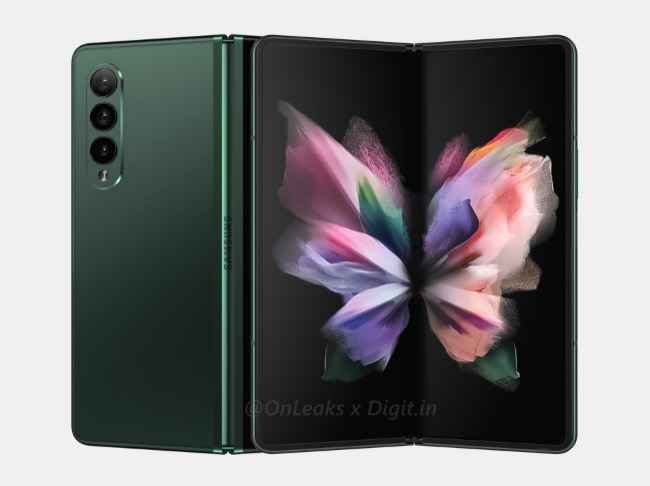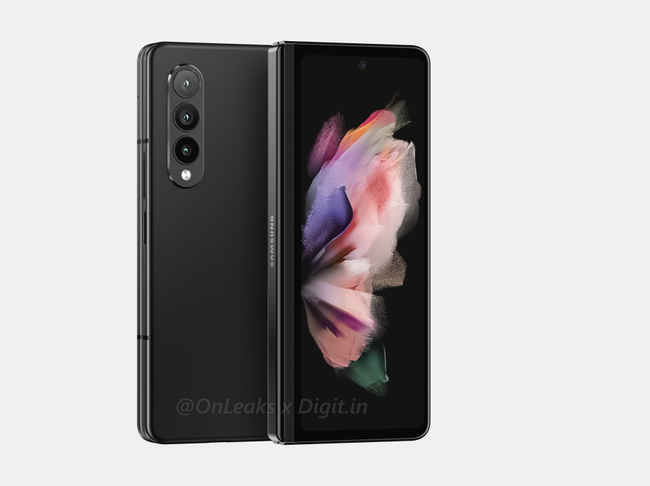Samsung Galaxy Z Fold3 is rumoured to launch in the next few months headlining the third generation of the foldable series. The Galaxy Z Flip3 is also expected to make an appearance alongside the Fold3 as both phones look to showcase Samsung’s technological prowess in the foldable smartphone segment. With phones such as the Mi Mix Fold and the Oppo X 2021 become a reality now, the foldable smartphone space has never been so exciting. Samsung is readying the Galaxy Z Fold3 for launch later this year and today we have some exclusive information about it courtesy of popular tipster OnLeaks.
Come and take a closer and highly detailed look at the upcoming #Samsung #GalaxyZFold3 (stunning 5K renders + 360° HD video and renders + display sizes + dimensions + color options)! On behalf of my Friends over @digitindia -> https://t.co/5yc3q4kL3L pic.twitter.com/BwiA3WlhRx
— Steve H.McFly (@OnLeaks) June 30, 2021We have managed to get some new renders of the Fold3 from OnLeaks that give us a good look at what to expect from the upcoming successor to the Fold2. The Fold3 does not look very different from the previous generation. One of the major additions is the support for the S Pen stylus that will allow users to make use of all that screen estate. You can watch the video with the gorgeous 5K renders below or you can scroll down to read more granular details about the upcoming Fold3.
Samsung Galaxy Z Fold3 leaked specifications and features Click here to view the high resolution image
Click here to view the high resolution image
The Samsung Galaxy Z Fold3 is thinner and lighter in comparison to the Fold 2. When folded, it measures 14.5 millimetres in thickness and 15.6 millimetres including the rear camera bump and when unfolded, Fold 3 has a thickness of just 6.6 millimetres which translates to 7.7 millimetres including the camera bump. The overall dimensions are 158.1 x 64.8 x 14.5mm (15.6mm including rear camera bump) when folded and roughly 158.1 x 128.1 x 6.6mm (7.7mm including rear camera bump) when unfolded.
 Click here to view the high resolution image
Click here to view the high resolution image
As per the high resolution renders shared by OnLeaks, the Galaxy Z Fold 3 features an in-display camera on the main display which is situated on the top centre. Do note that these renders have been made to show the location of the in-display selfie camera.
The cover display has a punch-hole cutout in the top centre for the selfie camera. The Fold 3 features a 7.5 inch AMOLED main display with a 120Hz refresh rate while the cover display measures 6.2 inches.
 Click here to view the high resolution image
Click here to view the high resolution image
There are triple cameras on the back stacked neatly in a vertical arrangement accompanied by an LED flash. The design of the camera module is a bit different and narrow from Fold 2 and looks much cleaner. While the exact details about the cameras remain under wraps, Fold 3 is expected to have a primary camera followed by a telephoto and ultra-wide sensors like we saw on Fold 2.
 Click here to view the high resolution image
Click here to view the high resolution image
The leaked renders suggest that Fold 3 has a side-mounted fingerprint reader and it will be available in black, dark green and pink colours.
The Samsung Galaxy Fold3 is rumoured to launch sometime in August and we expect to hear more about it and the Flip3 as we near the launch.
from Mobile Phones News https://ift.tt/2UHT1Sj

Comments
Post a Comment